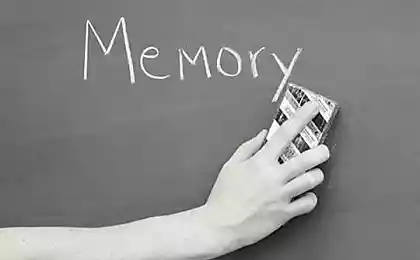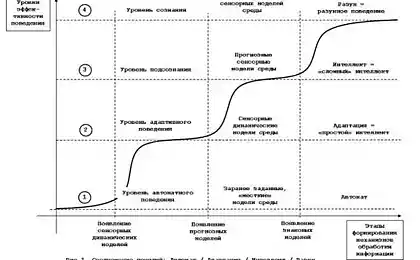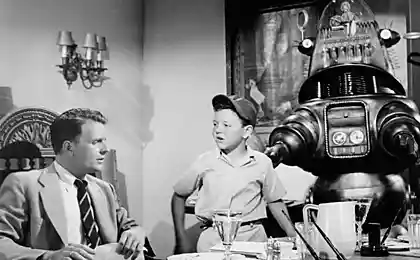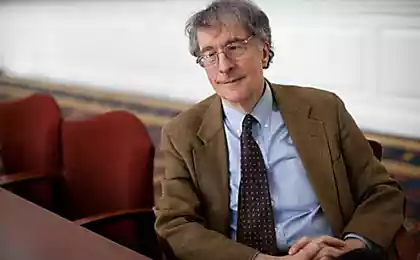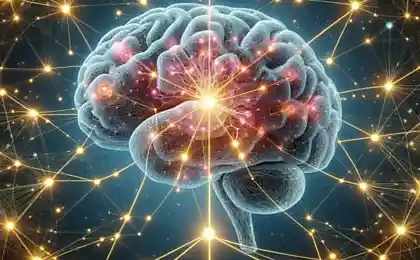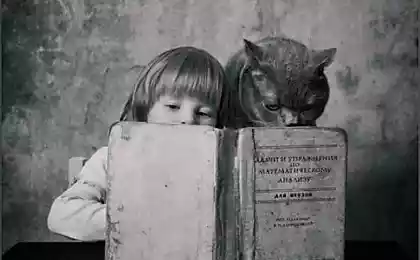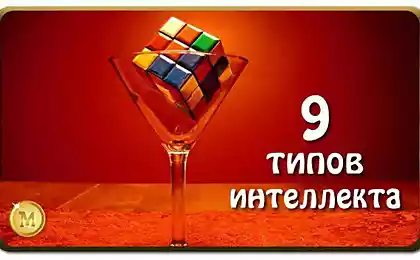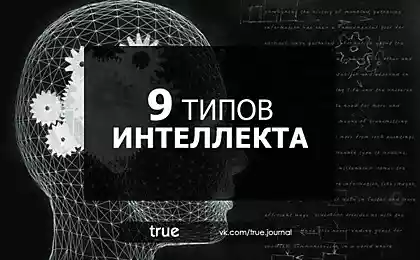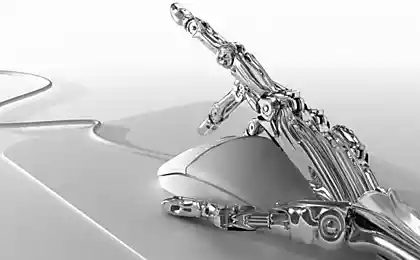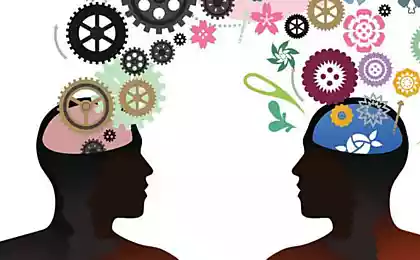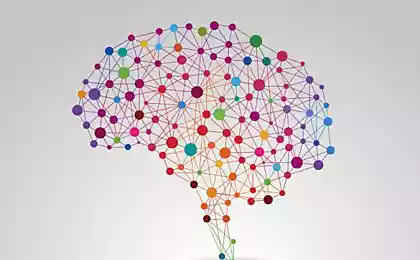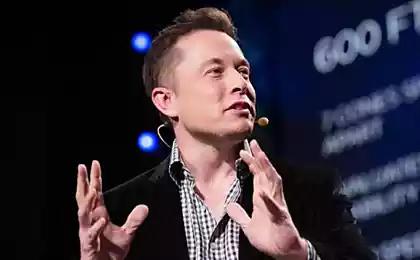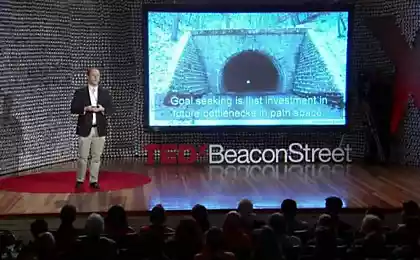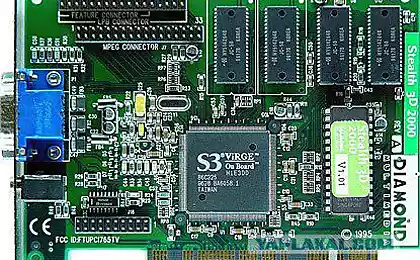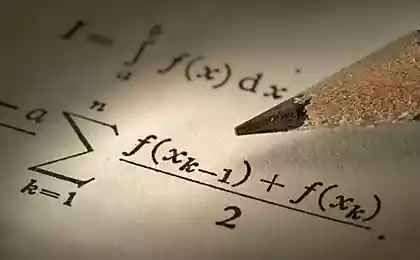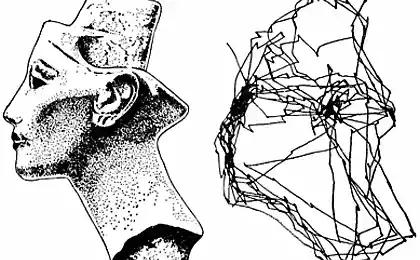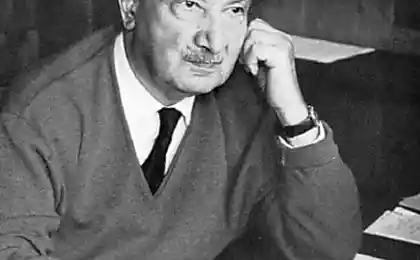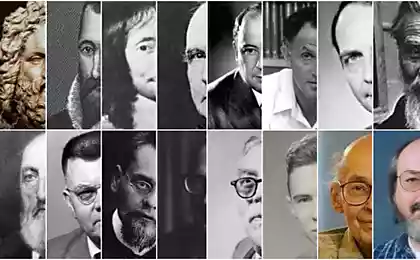1972
Logic thinking. Part 12: Traces of Memory
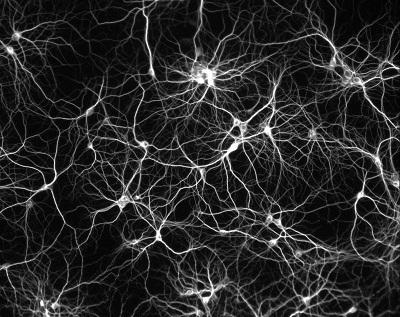
This series of articles describes the wave model of the brain is very different from traditional models. We strongly recommend to those who just joined, start reading from the first part of the .
Engrams are those changes that occur with the brain at the time of remembering. In other words, the engram - a memory trace. Quite naturally, the understanding of the nature of engrams is perceived by all researchers as a key challenge in the study of the nature of thinking.
What is the complexity of this problem? If you take an ordinary book or external computer drive, then both can be called memory. Both stores information. But little store. To become useful information, you should be able to read it and know how to operate it. And then it turns out that the very form of information storage is closely linked with the principles of its treatment. One largely determines the other.
Human memory - it is not just the ability to store a large set of different images, but also a tool that allows you to quickly find and play the pertinent memory. Thus except for associative access to any fragment of our minds we know how to communicate in a chronological chain of memories not play a single image, and the sequence of events.
Wilder Penfield received deserved recognition for his contributions to the study of the functions of the cortex. Catching the treatment of epilepsy, he developed a technique of open brain, which was used in the course of electrical stimulation, allows to specify the epileptic focus. Exciting electrodes of different areas of the brain, Penfield recorded the reaction in conscious patients. It is possible to obtain a detailed insight into the functional organization of the cortex (Penfield, 1950). Stimulation of certain areas, mainly the temporal lobes, causing patients vivid memories in which past events have surfaced in great detail. Moreover, repeated stimulation of the same sites caused the same memories.
Identified Panfilov clear localization in the cortex of many functions in looking for the same exact localization of memory traces. In addition, the advent of computers and accordingly represent how organized physical media computer data, stimulated a search for something similar in the brain structures.
In 1969, Jerry Letvin said: "If the human brain consists of specialized neurons, and they encode the unique properties of different objects, then, in principle, somewhere in the brain must be a neuron by which we learn and remember your grandmother." The wording "grandmother neuron" entrenched and often pops up when the subject comes up about the device memory. Moreover, there were also direct experimental confirmation. Neurons were detected responsive to certain images, for example, clearly recognizing specific person or a specific phenomenon. However, when more detailed studies proved that the observed "specialized" neurons respond not only to one thing, but on the group in some sense similar images. Thus, it was found that the neurons respond to Jennifer Aniston, just react and Lisa Kudrow starred with Aniston in the TV series "Friends", and neuron recognize Luke Skywalker learned and master Yoda (RK Quiroga, K. Koch, J. Fried, 2013).
In the first half of the twentieth century, Karl Lashley put very interesting experiments on the localization of memory. He first taught rats to find a way through the maze, and then removes them to different parts of the brain starts in the maze. So he tried to find the part of the brain that is responsible for the memory of the acquired skills. But it turned out that the memory in one way or another has always remained, despite the sometimes considerable dysmotility. These experiences have inspired Karl Pribram formulate became widely known and popular theory of holographic memory (Pribram, 1971).
Principles of holography, as well as the term, coined in 1947 by Dennis Gabor, who received a Nobel Prize in Physics in 1971. The essence of holography in the following. If you have a light source with a stable frequency, then dividing it by the semitransparent mirror into two, we obtain two coherent light beams. One stream can be directed to the object, and the second on a photographic plate.
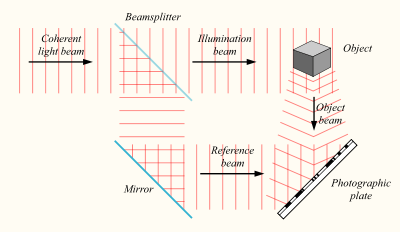
Creating holograms i>
As a result, when the reflected light from the object reaches a photographic plate, it will create a flow plate covering the interference pattern.
The interference pattern is printed on a photographic plate, retain information not only on the amplitude but also the phase characteristics of the light field, the reflected object. Now, if the exposed plate to light earlier, then restore the original light output, and we'll see the stored object in its entirety.
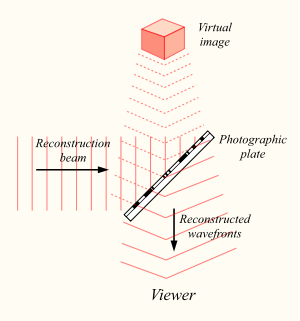
Playing hologram i>
The hologram has some amazing properties. Firstly, the amount of light output saves, that is, looking at the phantom object at different angles, you can see it from different sides. Secondly, every part of a hologram contains information about all the light field. So, if we cut a hologram in half, first we see only half of the object. But if we tilted his head, over the edge of the rest of the hologram we can see a second "cut" part. Yes smaller fragment hologram, the lower the resolution. But even through a small portion can be as through the keyhole, to consider the whole picture. Interestingly, if the hologram is a magnifier, then through it can be seen from the increase in other objects imprinted there.
With reference to the memory Pribram formulated: "The essence of the holographic concept is that the images are restored when their representation in the form of systems with distributed information appropriately listed in the active state" (Pribram, 1971).
The mention of the holographic memory properties can be found in two contexts. On the one hand, referring to the holographic memory, emphasize its distributed nature and the ability to restore images using only a part of neurons, just as it happens with the fragments of the hologram. On the other hand, assume that the memory having properties similar to a hologram, based on the same physical principles. This means that because of holography is based on fixation of the interference pattern of the light fluxes, the memory apparently somehow uses the interference pattern occurring as a result of pulse coding information. Rhythms of the brain are well known, and where there oscillations and waves, and, therefore, inevitable and their interference. So, the physical analogy seems quite appropriate and attractive.
But the interference of a delicate thing, small changes in the frequency or phase of the signal should completely change her picture. However, the brain works successfully and with substantial variations in its rhythms. In addition, attempts to hinder the spread of the electrical activity of dissecting its parts and putting in place of mica cuts, strips overlaying gold foil to create a circuit, the creation of epileptic foci by injection aluminum paste does not violate too pathologically brain activity (Pribram, 1971).
Speaking of memory, it is impossible to ignore the known facts about the relationship of memory and the hippocampus. In 1953 the patient, which is called HM ( Henry Molaison em>), the surgeon removed the hippocampus (W. Scoviille, B. Milner, 1957). It was a risky attempt to cure severe epilepsy. It is known that removal of one of the hemispheres of the hippocampus actually helps with this disease. Given the exceptional strength of epilepsy in HM, the doctor removed the hippocampus from both sides. As a result, H.M. completely disappeared ability to memorize anything. He remembered that he had with him before the surgery, but all new took off from his head as soon switched his attention.
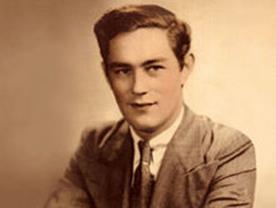
Henry Molaison i>
H.M. long studied. In the course of these studies were conducted countless different experiments. One of them was particularly interesting. The patient is offered a five-pointed star to circle, looking at her in the mirror. This is not a very simple task, causing difficulty in the absence of proper skill. Quest given H.M. repeatedly and every time he saw him, as seen for the first time. But it is interesting that every time a quest to give him easier and easier. He himself in repeated experiments noted that expected it would be much more difficult.
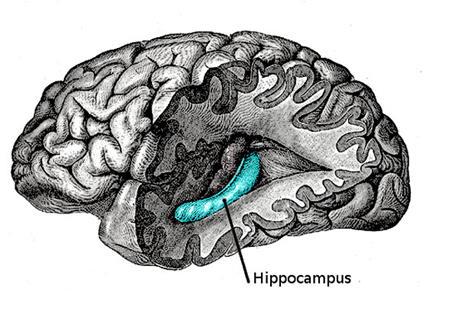
The hippocampus of one hemisphere i>
In addition, it was found that certain memory of the events still was inherent HM For example, he knew about the Kennedy assassination, even though it was after the removal of his hippocampus.
From these facts, it was concluded that there are at least two different types of memory. One type is responsible for the fixation of specific memories and the other is responsible for obtaining a certain generalized experience that is expressed in the common knowledge of the facts or the acquisition of certain skills.
Case H.M. quite unique. In other situations associated with the removal of the hippocampus, where there was not such a complete bilateral damage, as in HM, memory impairment, or were less pronounced or absent altogether (W. Scoviille, B. Milner, 1957).
Let us now try to compare all described with our model. We have shown that stable recurring phenomena form the pattern of neural detectors. These patterns are able to recognize their characteristic combination of features and add new wave picture IDs. We showed how to reverse playback can occur on the identifier attributes of the concept. This can be compared with the memory of the generalized experience.
But this is not a generalized memory allows you to recreate a specific event. If one and the same phenomenon is repeated in different situations, we have in our neural network simply get associative links between the concept, the relevant phenomena and concepts that describe these circumstances. Using this associativity, you can create an abstract description, which consists of concepts that occur together. The task of the event memory - it is not to reproduce an abstract painting, and recreate it memorized earlier situation, describing the specific event only with all his characteristic unique features.
Complexity itself in the fact that in our model there is no such place anywhere, wherever localized complete and comprehensive description of what is happening. Full description consists of many descriptions, active in individual areas of the cortex. Each zone has a description in terms of the wave, which is peculiar to this area of the brain. And even if we somehow remember what happens on each zone individually, these descriptions will be necessary to further harmonize the way that originated holistic way.
A similar situation arises when we have a topographic projection neurons with local receptive fields. Suppose that we have a neural network, which consists of two flat layers (figure below). Assume that the state of the neurons of the first layer forms a definite image. The picture is transmitted through a projection on the second fiber layer. Neurons of the second layer have a synaptic connection with the fibers which fall within the limits of their receptive fields. Thus, each of the neurons of the second layer sees only a small fragment of the original image of the first layer.
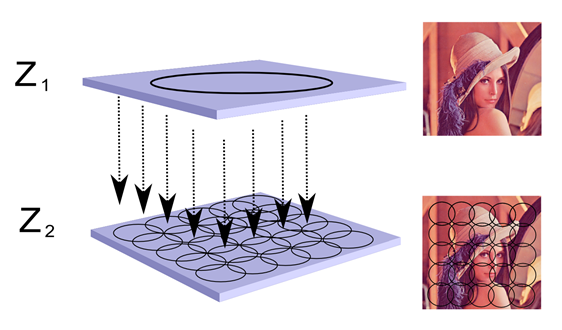
The topographical projection of the image on the local receptive fields i>
There is an obvious way to remember on the second layer of the image supplied. It is necessary to choose a set of neurons to their receptive fields completely covered the projected image. Remember each of your neurons of an image. And to the memory acquired connectedness - tick all these neurons are common markers indicating that they belong to one set.
Such storage is very simple, but extremely wasteful in the number of neurons involved. Each new image will require a new set of distributed memory.
Get the savings you can, if it turns out that different images are repeated any common parts, then you can not make a new neuron to memorize such a fragment, and take advantage of already existing neurons by simply adding it another marker, now on a new picture.
Thus, we come to the basic idea of distributed remembering. We describe it first to the images and topographic projection.
Shall apply to the first zone, different images and projecting them to a second zone. If we make the receptive fields of the neurons are sufficiently small, then the number of unique images in each local region would be not so great. So we can find the dimensions of the receptive field to the area, the size of which will be approximately the same as the size of the receptive fields of neurons, place all of the unique options of local images.
Create a spatial region containing neurons detectors. Make it so that each region contains detectors of all possible unique manner and that such areas cover the whole space of the second zone. For this we can use the principles described earlier release sets of factors.
Objective detectors - compare fed on their receptive fields images with images specific to them. For this comparison, the images can be used by the convolution of the receptive field of R em>:

The response of the neuron will be the higher, the more the image of the new cover image stored. If we are not interested in the degree of coverage and the level of coincidence of images, you can use the correlation of images, which is nothing else than the normalized convolution:

Incidentally, this is the same value as the cosine of the angle formed by the vector of the image and the vector of weights:

As a result, each local group of detectors when submitting new picture neurons will fire detectors that best describes your local fragment.
Now do the following: we generate for each new image a unique tag identifier and mark it active neurons detectors. We find that each delivery is accompanied by the appearance of the image on the second cortex activity pattern, which is a description of this image is available through a second zone signs. Create a unique identifier and marking them active neurons detectors - this is the memorization of a specific event.
If we choose one of the markers, we find neurons detectors containing it, and to restore their characteristic local images, we obtain the restoration of the original image.
To store and play back many different images, neurons detectors shall be of constant synaptic weights and have the ability to store as many markers as the memories they will remember.
We show the work of distributed remembering simple example. Suppose that we generate in the upper zone of contour images of various geometric shapes (see Figure below).
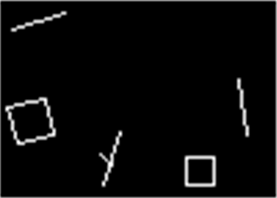
The supplied image i>
We will teach the lower zone for allocation of various factors by decorrelation. Basic images that will appear in each small receptive field - is the line at different angles. There will be other way, such as intersections and corners inherent geometric shapes. But the line will dominate, that is more common. This means that they will stand out above all in the form factors. The real result of this training is shown below.
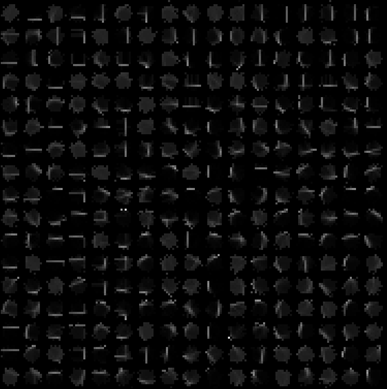
Detail fields factors extracted from the contour images i>
It is evident that many stands of vertical and horizontal lines, distinguished by their position in the receptive field. This is not surprising, since even a slight shift creates a new factor that has no intersections with their parallel "twins". Suppose that we somehow have complicated our network so that adjacent parallel "twins" have merged into one factor. Next, assume that in small regions identify the factors, as shown in the figure below, with certain discrete describe all possible directions.
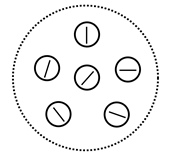
Factors in a small region corresponding to different directions with increments of one hour i>
Then the result of learning the entire cortex can be roughly represented as follows:
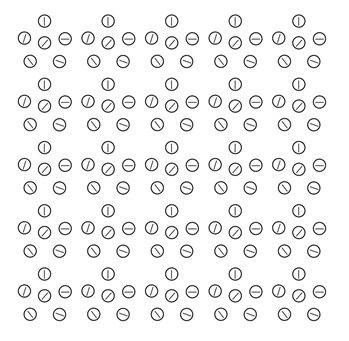
Conditional learning outcome cortex. For clarity, the neurons are located not on a regular grid i>
Now will provide trained to bark image area of a square. Neurons that they see on their receptive field characteristic for them activating stimuli (see Figure below).
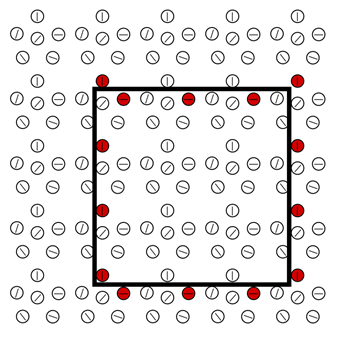
Reaction trained cortex to form a square i>
Now generate a unique random number - the identifier of the memories.
References
Previous parts:
Part 1. Neuron
Part 3: Perceptron, convolutional network
Part 4. Background activity
Part 5. Brain Waves
Part 6. The system of projections
Part 7. Human-Computer Interface
Part 8: Allocation factors in wave networks
Part 9: Patterns of neuronal detectors. Rear projection
Part 10. The spatial self-organization
Part 11. Dynamic Neural Networks.
Alexei Redozubov (2014)
The logic of thinking. Part 11: Dynamic Neural Networks. Associativity
Logic thinking. Part 13. Associative Memory
